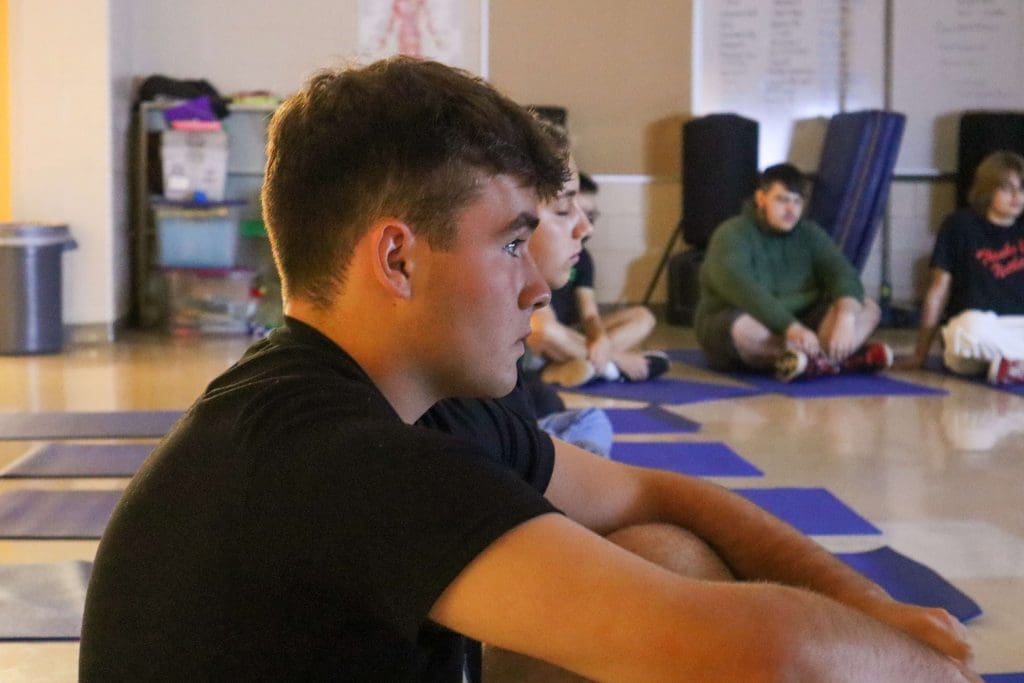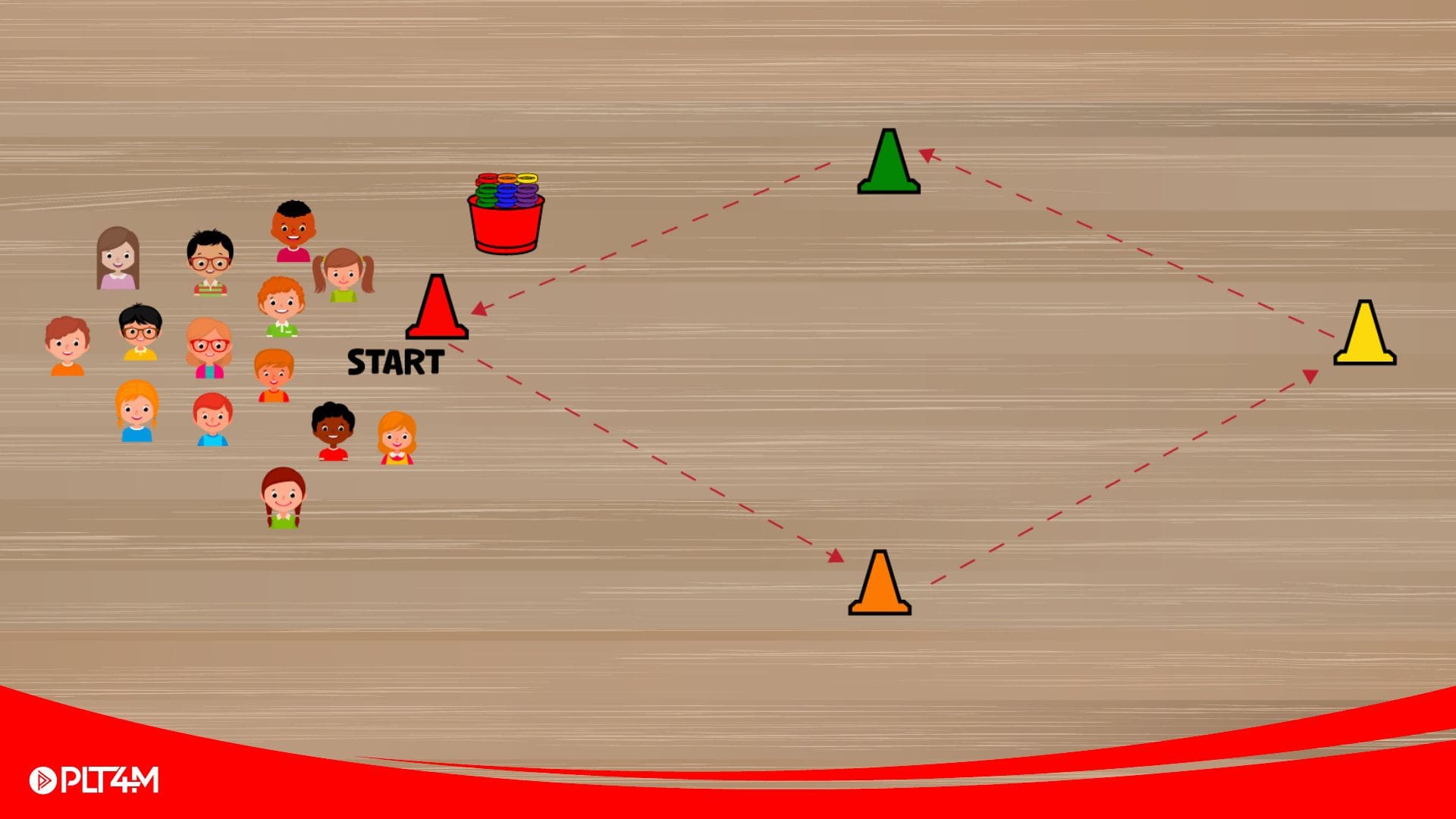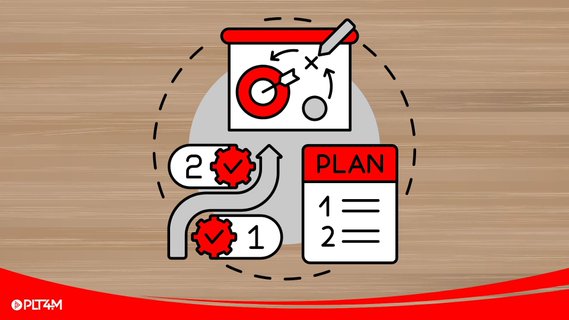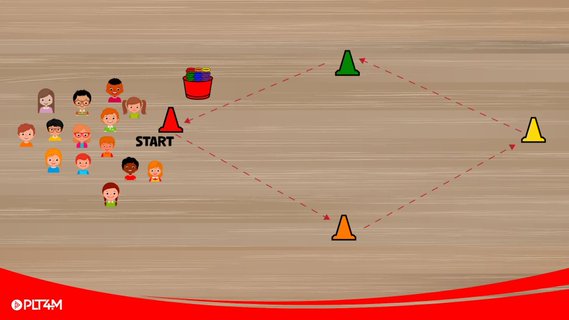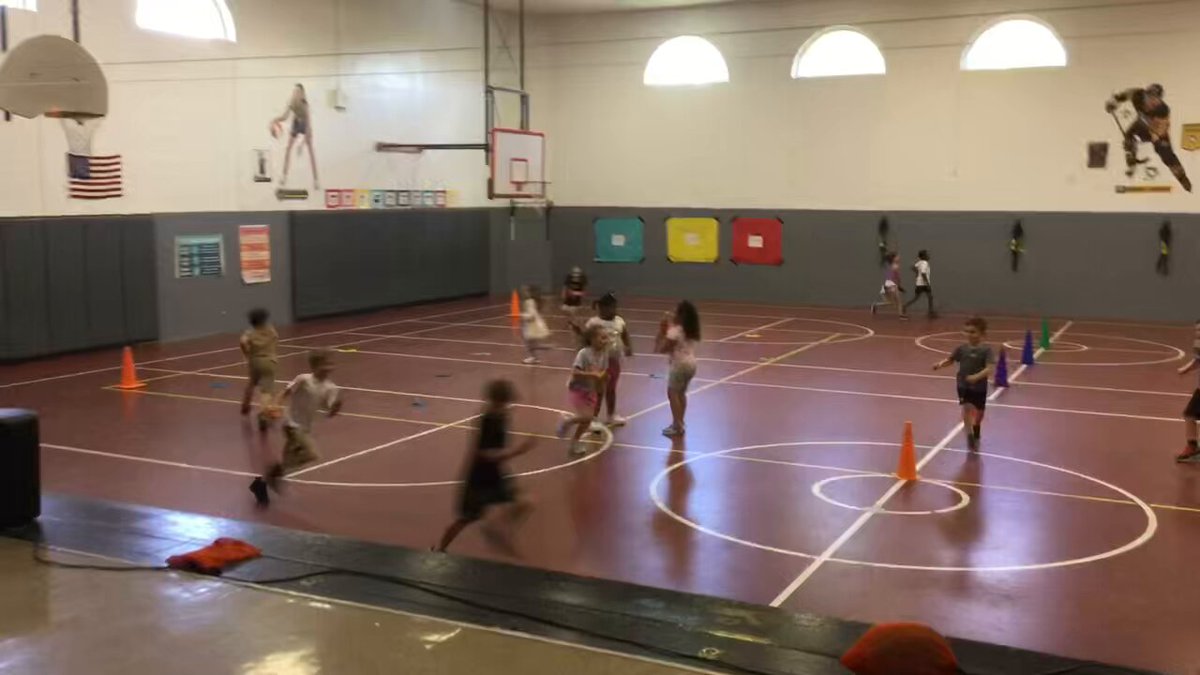Student stress levels are at an all-time high. And with mental health a growing concern for school districts, stress management activities can give students healthy ways to handle stress. Check out free stress management lesson plans and other stress management strategies.
Importance Of Stress Management Lesson Plans
Everyone experiences stress in their daily lives in different ways. First and foremost, it is essential to understand that stress is okay. We all experience different types of stress throughout our lives; sometimes, it can be a good thing to help us build resilience. But, chronic stress can strain our body and mind in ways we want to avoid.
And while we all experience stress, we don’t often develop stress management techniques. Instead, we normalize stress and often hope that it sorts itself out. “Just relax” or “calm down” are common phrases that youth hear from adults without any practical coping strategies to follow.
Therefore, it is helpful to find tools and strategies that can help us to manage stress in a productive and healthy way. Stress management lesson plans can empower students to find balance in their lives during stressful times.

What Are Stress Management Lesson Plans?
Stress management lesson plans come in many different forms. Schools have adopted various online resources to help engage students with stress management techniques.
Some of the most common approaches to managing stress are through mindfulness activities. Other options include different types of meditation, breathing exercises, and relaxation techniques.
All of these different stress management lesson plans often fall under the umbrella of social-emotional learning. And while it is a big umbrella to cover everything in SEL, many of these stress lesson plans can take as little as 10 minutes.
3 Free Stress Management Lesson Plans
Below are three stress management lesson plans from PLT4M. We tackle stress head-on and explore three different types of stress that students experience in their daily lives:
Physical Stress
Mental Stress
Emotional Stress
Each lesson is under 10 minutes and provides video and written materials. In this three-part stress management series, students learn more about stress, practice mindfulness, and meditation techniques, and finish with discussion questions. Give these lessons a try with your students or even for yourself!
Physical Stress
Our body experiences physical stress when it is subjected to the demands or challenges of life that exceed our normal capacity to adapt and cope. We live busy lives and can often feel like we are running on empty.
Our life is so full with school, work, practice, and other commitments that often by the end of the day our whole body might feel tense or tired.
For example, one way we often notice physical stress is tension in our muscles. A few different examples of this include:
- Tense or tight shoulders
- Clenched jaw
- Squeezed or closed fists and hands
The Power Of Noticing
While it may seem simple, the first step to relieving physical stress is by noticing. We often go throughout the day with lots of physical stress and tension without even ever noticing it. We do this so much so that we can become unaware of just how much tension we carry with us throughout the day. This can start to build up.
By noticing, we allow ourselves the opportunity to become more aware of what part of our bodies are experiencing the tolls of physical stress. While this can happen at any point of the day, our meditation tool for physical stress is a body scan.
Tense and Release Exercise Notes
A tense and release exercise, also known as progressive muscle relaxation (PMR), is a relaxation technique that involves intentionally tensing and then relaxing different muscle groups in the body. The goal of this exercise is to promote physical and mental relaxation by increasing awareness of muscle tension and learning to release it.
Here’s how you can perform a tense and release exercise:
- Find a Quiet Space: Choose a quiet, comfortable environment where you can focus without distractions.
- Start with Breathing: Take a few slow, deep breaths to help calm your mind and prepare for the exercise.
- Focus on a Specific Muscle Group: Begin by focusing on a specific muscle group, for example, your hands or your forearms.
- Tense the Muscles: Inhale deeply and slowly as you deliberately tense the chosen muscle group. Hold the tension for about 5-10 seconds. Make sure to tense the muscles without straining or causing discomfort.
- Release the Tension: Exhale slowly and completely as you release the tension in the muscle group. Focus on the sensation of relaxation as the muscles let go.
- Move to the Next Muscle Group: Gradually work your way through different muscle groups in your body, systematically tensing and then releasing each one. Common muscle groups to include are hands, forearms, upper arms, shoulders, neck, face, chest, abdomen, back, thighs, calves, and feet. You can even do the whole body at once.
- Finish with a Deep Breath: Once you have gone through all the muscle groups, take a few deep breaths to re-energize and ground yourself.
Body Scan Exercise Notes
A body scan is a mindfulness-based relaxation technique that involves systematically directing your attention to different parts of your body, from head to toe, to increase awareness and promote relaxation. It’s a way to bring attention to physical sensations, release tension, and cultivate a sense of calm and well-being.
A body scan for relaxation can be a powerful tool for reducing stress, promoting relaxation, and increasing self-awareness. Regular practice can help you become more attuned to your body’s signals and promote a sense of calm and well-being. It’s a valuable technique for managing both physical and mental well-being.
Here’s how you can perform a body scan for relaxation:
- Find a Quiet Space: Choose a quiet and comfortable environment where you won’t be disturbed. You can sit or lie down for this exercise.
- Get Comfortable: If you’re lying down, make sure you’re in a comfortable position. You can use a mat or a soft surface. If you’re sitting, ensure your back is straight and your feet are flat on the ground.
- Close Your Eyes: Close your eyes if you feel comfortable doing so. This can help you focus your attention inward.
- Begin with Breath Awareness: Take a few slow, deep breaths to center yourself and bring your attention to the present moment.
- Focus on Your Feet: Start by bringing your awareness to your feet. Notice any sensations you feel in this area, such as warmth, coolness, tingling, or any points of tension. Don’t try to change anything; simply observe.
- Move Upward: Gradually move your attention upward, to your ankles, calves, knees, thighs, and so on, until you’ve scanned your entire body, even your face. As you do this, continue to pay attention to any sensations you notice in each area.
- Take Your Time: Spend a few moments on each body part. If you come across an area of tension or discomfort, simply acknowledge it without judgment.
- Release Tension: If you notice any tension, try to consciously relax that area. You can imagine the tension melting away as you exhale.
- Continue to Breathe: Throughout the body scan, maintain awareness of your breath. Use it as an anchor to keep you present in the moment.
- Finish with Full Body Awareness: Once you’ve scanned your entire body, take a moment to bring your attention back to your body as a whole. Notice the overall sense of relaxation and any changes in how you feel.
Discussion Questions
1) Consider another time you can practice a body scan on your own?
2) Where is a time you can carve out even a half hour for rest for unstructured time (not just sleep) to promote rest and relaxation?
Mental Stress
When we experience stress, our body’s “fight or flight” response is triggered. If you saw a bear in the woods, your brain would trigger a response system that we know as stress. The hypothalamus receives a signal from the amygdala and triggers the release of stress hormones, including adrenaline (epinephrine) and cortisol. These hormones prepare the body for action.
And while hopefully you aren’t running into too many bears in the woods, your body is still activating it’s stress response system, often over very small things. In fact, most of our thoughts that cause mental stress come from repetitive, negative, and useless thoughts.
While that might sound harsh, we all know that feeling of our heart rate rising as we start to think about an upcoming test or presentation, or even going to talk to that person you have a crush on. All sorts of questions and thoughts start to pop into your head about all the things that could go wrong. Remember, most of these are repetitive, negative, and useless!
What Causes Mental Stress?
Mental stress can occur by a variety of different things. And for each one of us, there might be something or somethings that cause us to experience mental stress. It may be phones and social media. It may be social interactions at school. It could even just be something like worrying about what you are going to wear to school.
We often are embarrassed to share or even think to ourselves about the things that cause us mental stress. Even if they might seem repetitive, negative, and useless, in the moment of stress, they certainly don’t feel like that to us. Be kind and patient to yourself when you experience mental stress. Rather than avoiding it, let’s notice it and use skills and tools to address it.
While a little stress is a good thing, chronic stress can take a toll on our bodies and minds. Let’s explore a tool and skill that can help to unravel our repetitive, negative, and useless thoughts.
**An important note! While a lot of our mental stress is caused by repetitive, negative, and useless thoughts, mental stress also occurs from traumatic and serious things. If we are worried about a sick loved one, money, or other things that impact our immediate lives, we should talk and work with someone we trust to help address and alleviate these issues if possible.**
The STOP Method Exercise Notes
So how do we break the loop of negative and repetitive thoughts? One of the best ways to break the loop is by focusing on our breath. This allows us to slow down and focus and break the pattern of mental stress.
Let’s take a look at the STOP method. By allowing your body to physically slow down, it can also help to mentally calm down.
The STOP Method: To wrap up the class and this lesson, let’s review the stop method.
S- Stop or pause and still your body.
T- Take deep breaths (in through your nose, out through your mouth. Feel your belly and chest fill with air).
O- Observe and notice how you feel. Any thoughts? Welcome them and allow them to be there.
P- Proceed. Continue on with what you are doing.
This STOP method can be just one minute. Notice how you feel when you practice this STOP technique. Are you more calm or focused? Or if you feel the same, that is okay! This takes practice and might not create an immediate fix. It takes time to grow in our meditation practice.
Discussion Questions
1) Where can I use the STOP method during my day?
2) What is one thing I can do to find mental rest this week?
Emotional Stress
If we break the word emotion down, we can look at it in two parts. E=Energy. M=Motion. Energy in motion. We can feel so many different emotions and feelings throughout the day. And a lot of times these emotions can be hard to describe or label.
Like physical and mental stress, the ways in which we can experience emotional stress will vary based on our circumstances and experiences. But for most people, emotional stress usually stems from the people we surround ourselves by. Therefore, emotional stress can often conjure up words like anxiety, frustration, sadness, and other more negative words.
For example, let’s say you have a new idea for a project you are working on at school. When you take this idea to a friend or peer, instead of supporting you, they say “you can’t do that.” Depending on your relationship with this person, this could leave you feeling hurt, sad, insecure, or confused. But we often find ourselves around people who might not be our best champions or supporters. As a result, we will experience emotional stress around them in everyday situations.
So how do we work with that? We can’t always change the people around us. But we can manage and practice how we react and respond to our surroundings.
The RAIN Technique Notes
The “RAIN” technique is a mindfulness practice developed by Tara Brach, a clinical psychologist, author, and meditation teacher. RAIN is an acronym that stands for Recognize, Allow, Investigate, and Nurture. It is a structured approach to dealing with difficult emotions or challenging situations in a mindful and compassionate way.
Here’s a brief explanation of each step:
- Recognize: This step involves acknowledging and recognizing the presence of the emotion or thought that is causing distress. It’s about becoming aware of what you are experiencing without judgment or avoidance.
- Allow: Once you’ve recognized the emotion, the next step is to allow it to be present without trying to change or suppress it. This means giving yourself permission to feel what you’re feeling without resistance.
- Investigate: In this step, you gently inquire into the emotion or thought. You might ask yourself questions like “What does this feel like in my body?” or “What thoughts are associated with this emotion?” The aim is to gain a deeper understanding of the experience.
- Nurture: This step involves offering kindness, compassion, and self-care to yourself. It’s about providing comfort and support to the part of you that is experiencing distress. This can involve self-compassionate phrases or gestures.
The RAIN technique is particularly effective for working with difficult emotions or challenging situations in a mindful and compassionate way. It can help you develop greater self-awareness, emotional regulation, and a sense of inner peace. It might not be a magic wand to fix your feelings of emotional stress, but practice and explore this technique in your own practice.
Discussion Questions
1) Who are people in your life that empower you and support your best interests?
2) What are your gifts and talents? What makes you unique?
Key Takeaways On Stress Management Lesson Plans
By equipping students with skills and strategies to handle stressful situations, we are empowering our youth to interact with stress in a positive way. Stress management lesson plans give a direct way for students to explore the common causes of stress and the best ways to manage stress levels.
Better yet, students will find what works best for them! In just these three lessons we give various stress management activities that will resonate differently with students. While students might not like each and every one, they will hopefully find something that will help them in times of stress.
